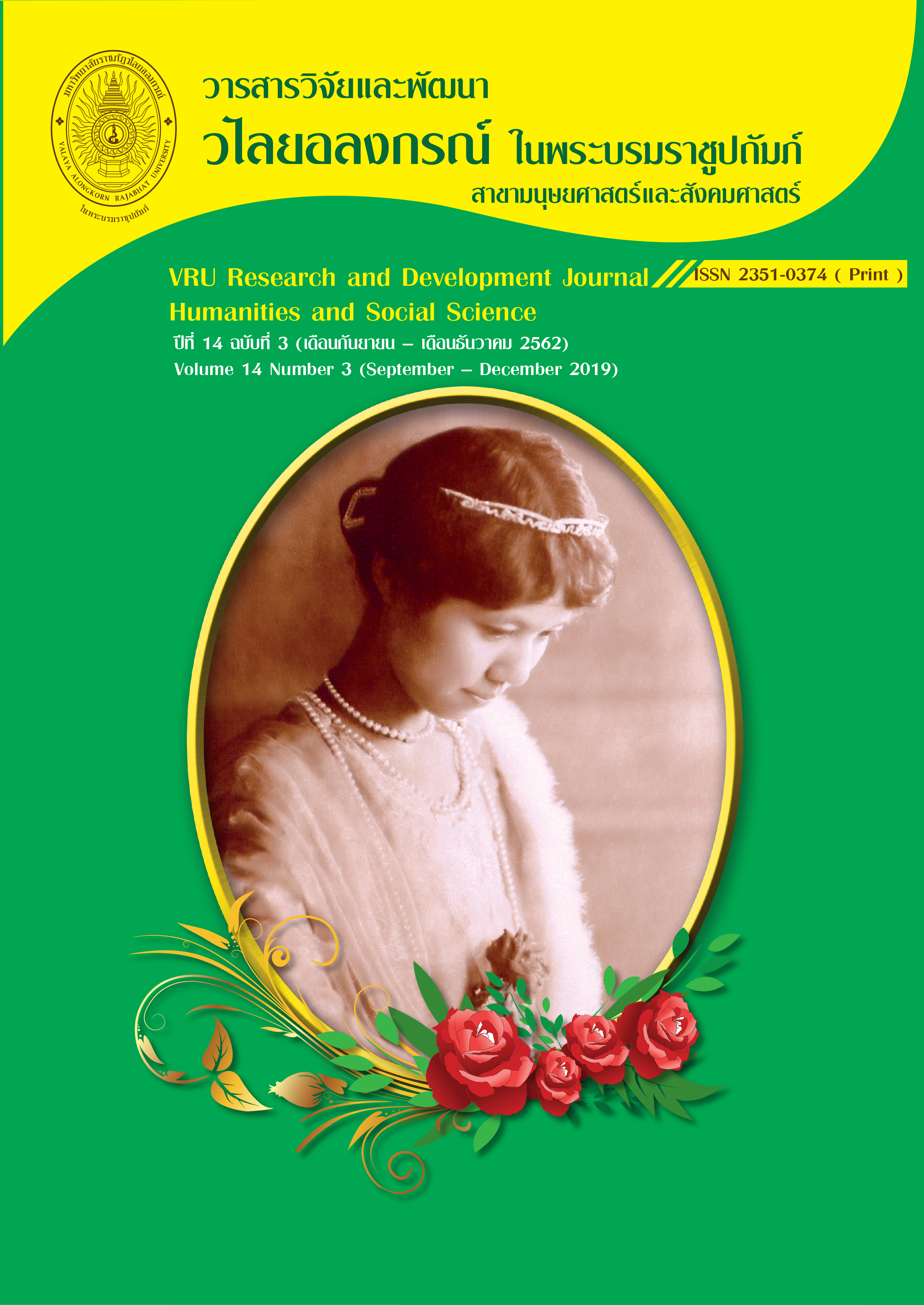WELFARE AND COMPENSATION OF MANUFACTURING EMPLOYEES IN PATHUMTHANI PROVINCE
Main Article Content
Abstract
The purpose of this research were to study 1) The levels of significance of welfare, compensation, and work efficiency. 2) The relationship between welfare and work efficiency. 3) The relationship between compensation and work efficiency. 4) The relationship between welfare and compensation. 5) Welfare and compensation effect on work efficiency of industrial factory employees in Pathumthani province. The population are factory employees. 30 factories were selected by purposive sampling with 358 samples calculated from unknown population, with 13 samples from each factory. The tools used were questionnaires as a quantitative research. The statistics used were frequency, percentage, mean, standard deviation, Pearson correlation coefficient, and multiple linear regression analysis.
The study had found that:
1) The levels of significance of welfare, compensation, and work efficiency in all aspects were high.
2) Welfare had a high positive effect on work efficiency of manufacturing employees in Pathumthani province (r = .742, Sig < .01).
3) Compensation had a high positive effect on work efficiency of manufacturing employees in Pathumthani province (r = .728, Sig < .01).
4) Welfare had a high positive effect on compensation of manufacturing employees in Pathumthani province (r = .732, Sig < .01). 5) Welfare and compensation had high positive effect on work efficiency of manufacturing employees in Pathumthani province.
5) Multiple correlation coefficient of welfare (β = .450, Sig < .01) and compensation (β = 0.398, Sig < .01) had positively affected work efficiency of industrial factory employees in Pathumthani province.
Article Details
ลิขสิทธิ์บทความวิจัยที่ได้รับการตีพิมพ์เผยแพร่ในวารสารมนุษยศาสตร์และสังคมศาสตร์ วไลยอลงกรณ์ ในพระบรมราชูปถัมภ์ ถือเป็นกรรมสิทธิ์ของคณะมนุษยศาสตร์และสังคมศาสตร์ มหาวิทยาลัยราชภัฏวไลยอลงกรณ์ ในพระบรมราชูปถัมภ์ ห้ามนำข้อความทั้งหมดหรือบางส่วนไปพิมพ์ซ้ำ เว้นแต่จะได้รับอนุญาตจากมหาวิทยาลัยเป็นลายลักษณ์อักษร
ความรับผิดชอบ เนื้อหาต้นฉบับที่ปรากฏในวารสารมนุษยศาสตร์และสังคมศาสตร์ วไลยอลงกรณ์ ในพระบรมราชูปถัมภ์ เป็นความรับผิดชอบของผู้นิพนธ์บทความหรือผู้เขียนเอง ทั้งนี้ไม่รวมความผิดพลาดอันเกิดจากเทคนิคการพิมพ์

